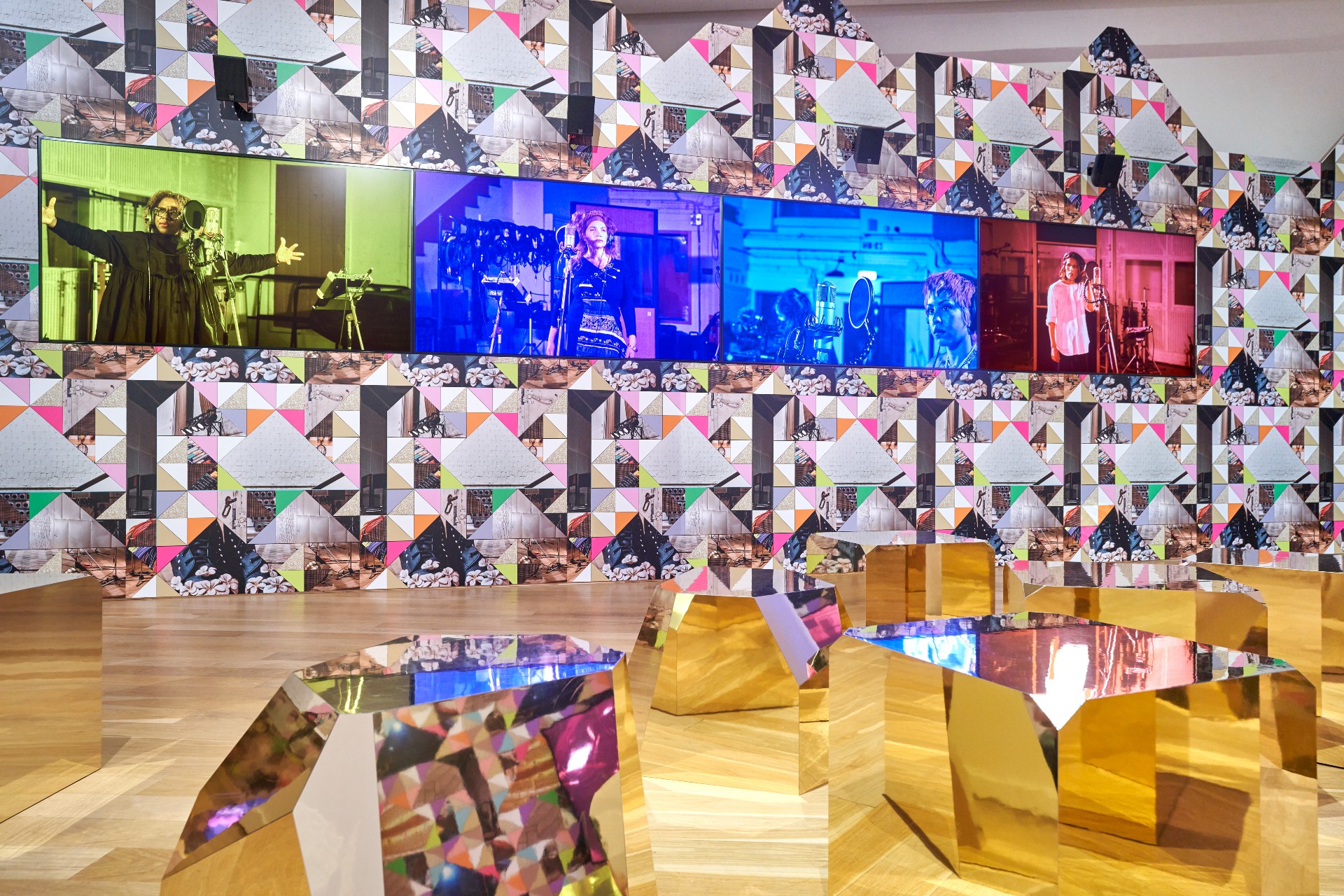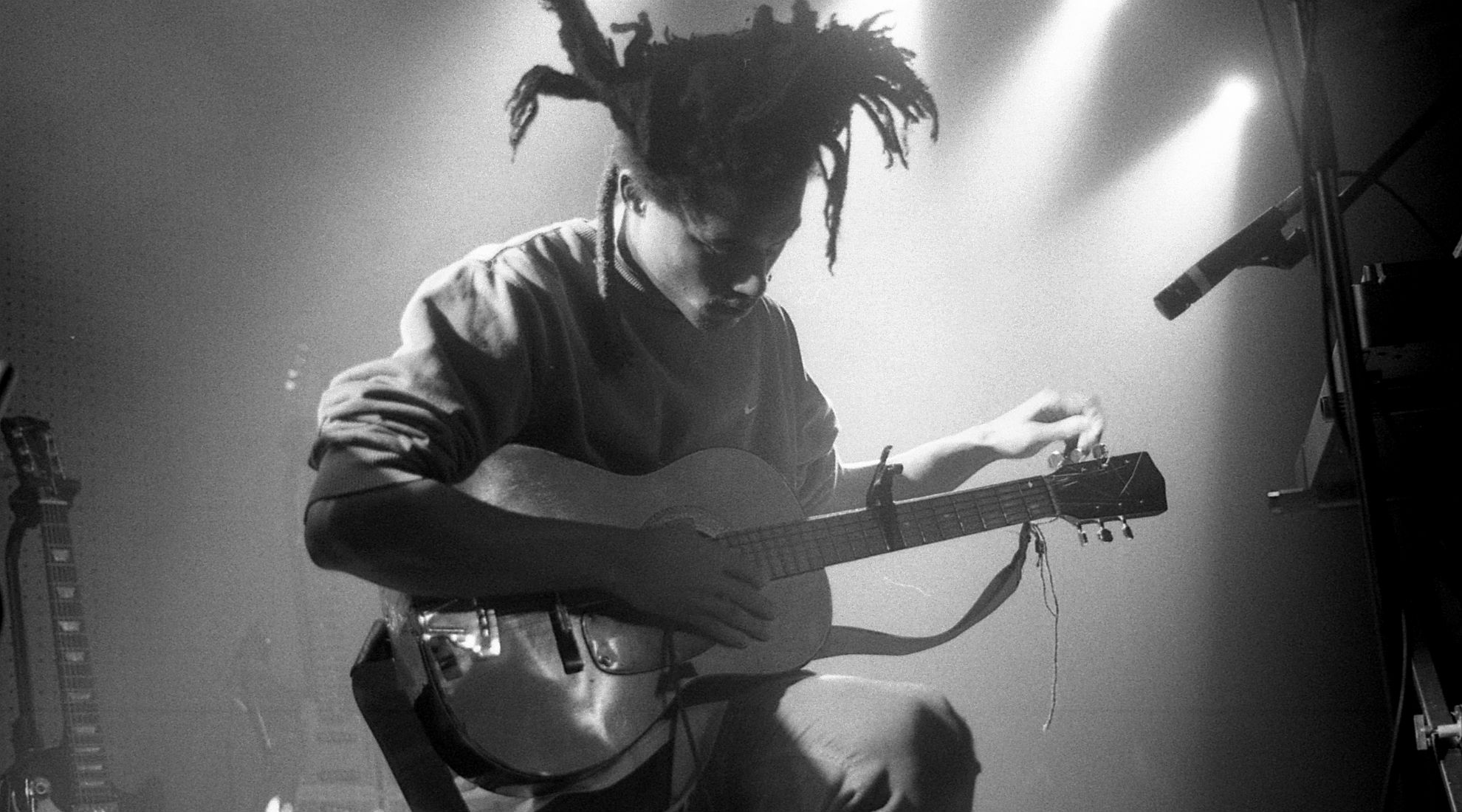The Henry Moore Institute in Leeds is showcasing a new collected exhibition that explores the relationship between poetry and sculpture, and how they capture and challenge our perception of the world.
‘The Weight of Words,’ which is being held till the 26th November, features the work of a genuinely unique and intriguing set of artists from around the globe of both past and present.
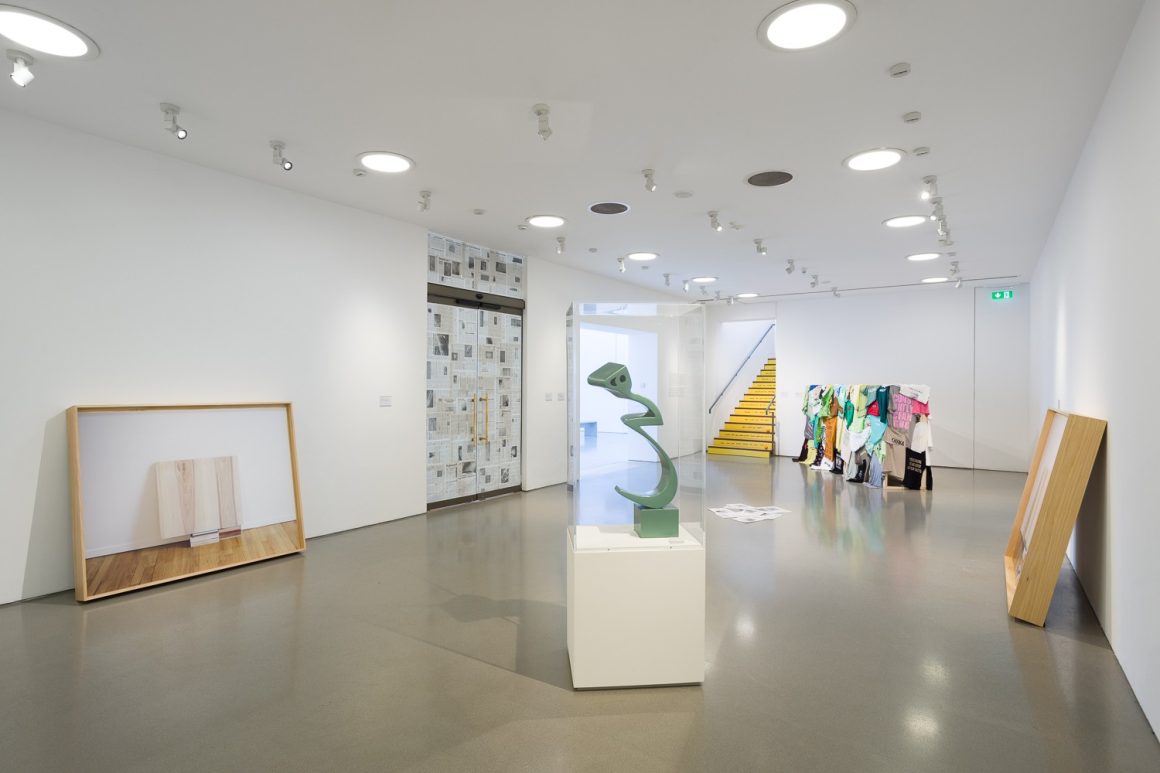
Walking into the exhibition, visitors first see Parvis Tanavoli’s ‘Standing Heech,’ which he created in 2007. Translated as simply “nothing” in the modern Persian language Farsi, the sculpture is a combination of three Persian letters. The use of the Persian ‘H’ in the piece resembles likeness to a human face. The combination of the meaning of the sculpture coiled in its appearance suggests the beauty in the simplicity of form and life.
One particular piece that stuck with me from the exhibition was Shilpa Gupta’s ‘Words Come From Ears,’ originally created in 2018. The piece is an installation of a motion flap board that continuously churns out broken sentences, some of them more sensical than others, and some of the letters jumbled; like abstract fragments of poetry edging towards a hidden meaning. Once taken in by the piece, I seemed almost stuck to it – constantly anticipating the next riddle of coded language that the board flaps assembled. It has a magnetic quality to it that brought me to question my relationship with life and hidden emotions, almost like the language in dreams.
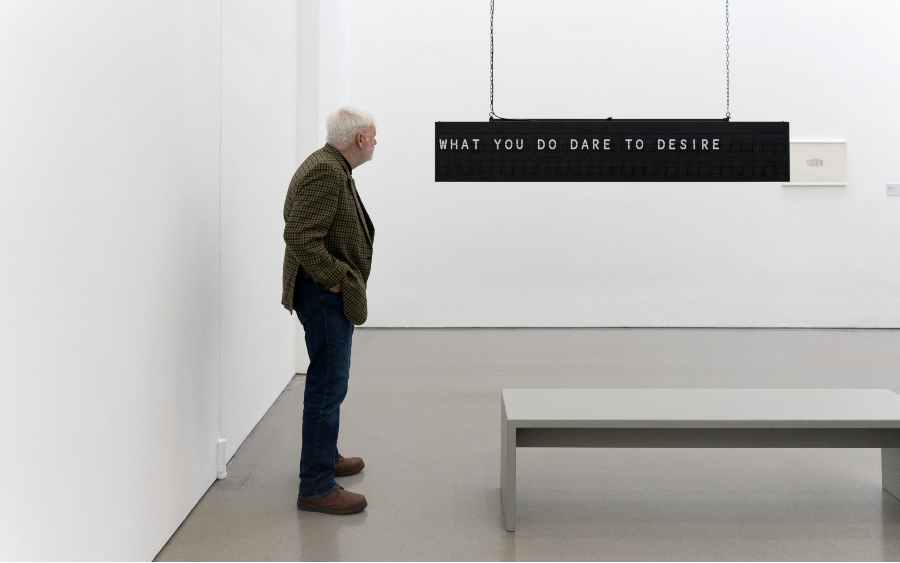
November 2023. Photo: Min Young Lim.
Another piece at the exhibition that captures the imagination is Issam Kourbaj’s ‘Dark Water, Burning World: 148 moons and counting’, created in 2016. The piece reflects on the Syrian Civil War, the boats containing burnt matches signifying the number of months that have gone by since the start of the turmoil. The piece is emotive and melancholic, yet somehow instilling hope at the same time, as if the boats are on an unstoppable course to salvation regardless of the situation.
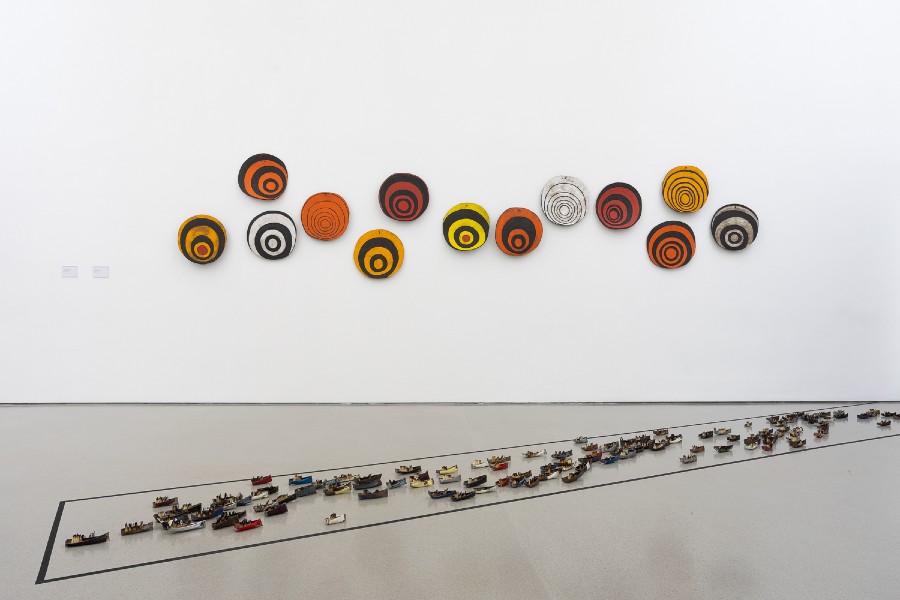
The 2005 piece ‘Warm Broad Glow’ by Glenn Ligon addresses racist language used by the author Gertrude Stein, taking the words from their original context and displaying them back as a fearless reclamation of black identity.
Set upon the stairs that used to lead across to the Leeds Art Gallery is the poetical display by Bhanu Kapil, taken from his 2001 book ‘The Vertical Interrogation of Strangers.’ Existential questions are stretched across the stairs that lead up to a locked door, the idea being that the observer is contained within a back and forth notion of thought, ruminating about their place, shape and meaning within the world.
Perhaps the defining piece of the exhibition is ‘Szpagat’ (meaning “split”) created in 2017 by the Berlin based art collective Slavs and Tatars. It is an upside down tongue that is split into two directions, conjuring up thoughts about unity and disconnect in our communication as humans, but essentially how we are all joined as we communicate with the same emotions, and in a way the languages we use are in effect “splitting hairs” (or tongues) when looking at our differences as humans.
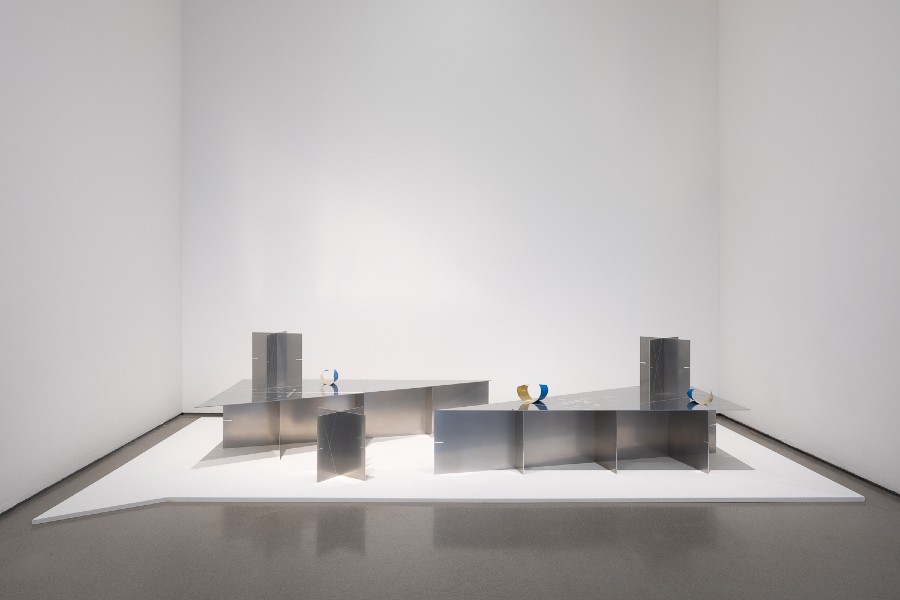
Photo: Rob Harris.
Other thought provoking pieces at the exhibit include Joo Yeon Park’s recent minimalist piece, ‘If Every Word,’ which plays on the idea of the short fable ‘The Library of Babel’ by Jorge Luis Borges, suggesting that there could eventually be a universal language by which everything could be explained, and Emma Hart’s also recently created ‘Good Vibrations’ which displays ceramic circles, portraying them as faces that are also targets, as though those who dare to speak out may be in danger, but they are also hypnotising to the viewer, suggesting that true wisdom and beauty will prevail in the end.
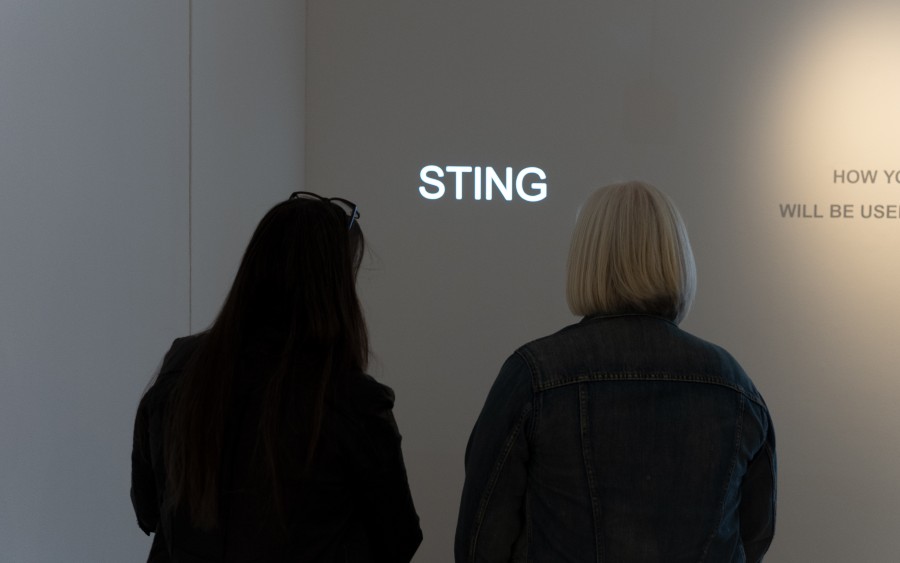
The piece ‘Little Thieves’ by Tim Etchells displays lit-up idioms that hang from the ceiling, and ‘Still Life with Dust,’ created by Pavel Büchler in 2017, displays the complacency and tiredness of human inaction in dust printed letters. Other notable pieces are the visual poetry piece ‘Five Senses for One Death’ by Simone Fattal and Etel Adnan, and perhaps most bizarre and scarier than all of the other installations is the audio-visual piece ‘Say Parsley’ by Caroline Bergvall and Ciarán Ó Meachair, which addresses the horrific situation in 1937 when tens of thousands of Creole Haitians were killed for not pronouncing the word “parsley” correctly in Spanish parlance.
This collected exhibition is a powerful and intriguing dissection of our consciousness and connections between culture, language, thought and tropes. An eye-catching and thought-provoking exhibition, not to be missed.
Address: 74 The Headrow, Leeds LS1 3AH

